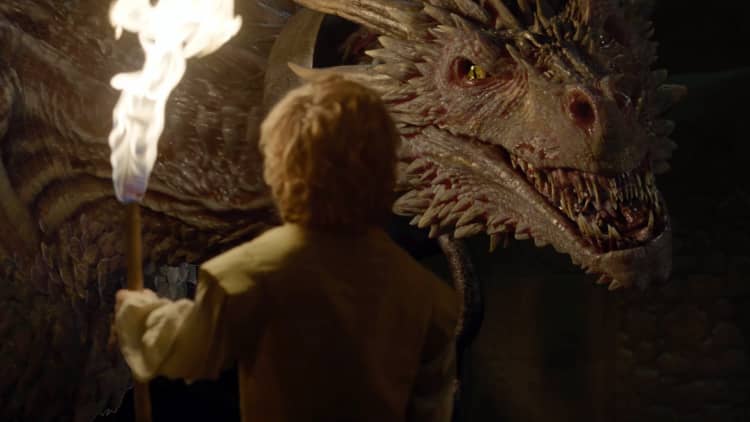How do you bring a fire-breathing dragon to life?
It starts with studying the movement of real-life lizards and bats, according to Sven Martin, the visual effects supervisor at Pixomondo. The company helped create dragons for HBO's blockbuster "Game of Thrones", which concludes its seventh season tonight.
Martin and his team needed to create creatures that would look and sound as realistic as possible because they would have to seamlessly interact with actors in real locations such as Spain, Croatia and Iceland.
"We wanted the visual effects to feel real, not artificial," Martin tells CNBC. "Everything you see is based on real animals. We took the best parts of what nature gave us."
The show – which boasted a reported budget of $10 million per episode last season – relies on 14 visual effects (VFX) firms from all over the world to create elaborate castles and armies of the dead. Fans clearly appreciate their hard work: this season has been the most popular yet, averaging 10 million viewers every Sunday night, according to data from Nielsen.
Presenting a mythical creature convincingly for an audience requires the expertise of many different professionals.
For example, Rhythm & Hues – an Emmy Award-winning visual effects studio in Los Angeles – also created dragons for "Game of Thrones" this season. 71 employees participated in the effort, including more than 10 animators (who made sure the skin and muscles appeared as realistic as possible), one rigger (who built the skeleton of the beast), three lighters, and 10 compositors (who assembled all the elements for the screen) as well as producers and coordinators.
"The average viewer doesn't realize how many visual effects are now in everyday TV and movies," says Chad Hudson, vice president of production at Rhythm & Hues. "There are obvious visual effects like a woman riding a dragon. But there are a lot more hidden effects in shows like synthetic environments designed to look like cities, facial enhancements, and making people look skinnier or fatter."
Hudson adds, "It's a combination of the technology getting better, but it can also be more cost effective to do a visual effect. Rather than securing permits to shoot in New York City, you can just create it."
One of the more memorable creatures in this season of "Game of Thrones" was the zombie polar bear in episode six.
Wayne Stables – the visual effects supervisor at Weta Digital, which created the monster – says a core team of some 20 people worked on that project, which posed its own unique challenges.
"Bears often look kind of happy," Stables says. "We needed to design a bear that would scare the audience."
The New Zealand-based company has traditionally focused on feature films such as The Lord of the Rings trilogy and Avatar, but Stables says securing a contract with "Game of Thrones" could have a real positive impact on his company's future business.
"It's a big thing that we can do this kind of work in TV," Stables says, "that we can work in these shorter time-frames. It's definitely noticed."



